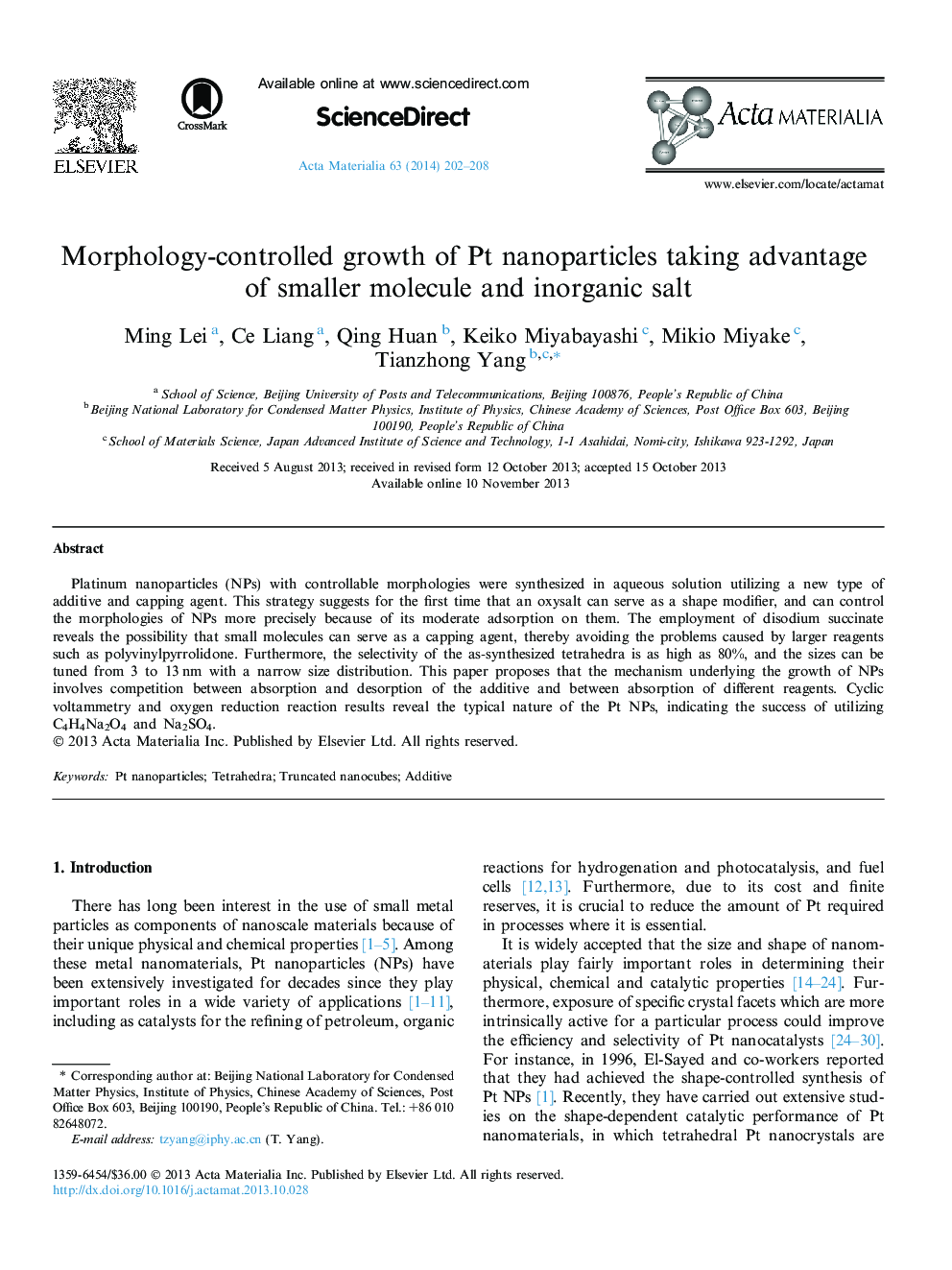| Article ID | Journal | Published Year | Pages | File Type |
|---|---|---|---|---|
| 1445906 | Acta Materialia | 2014 | 7 Pages |
Platinum nanoparticles (NPs) with controllable morphologies were synthesized in aqueous solution utilizing a new type of additive and capping agent. This strategy suggests for the first time that an oxysalt can serve as a shape modifier, and can control the morphologies of NPs more precisely because of its moderate adsorption on them. The employment of disodium succinate reveals the possibility that small molecules can serve as a capping agent, thereby avoiding the problems caused by larger reagents such as polyvinylpyrrolidone. Furthermore, the selectivity of the as-synthesized tetrahedra is as high as 80%, and the sizes can be tuned from 3 to 13 nm with a narrow size distribution. This paper proposes that the mechanism underlying the growth of NPs involves competition between absorption and desorption of the additive and between absorption of different reagents. Cyclic voltammetry and oxygen reduction reaction results reveal the typical nature of the Pt NPs, indicating the success of utilizing C4H4Na2O4 and Na2SO4.
